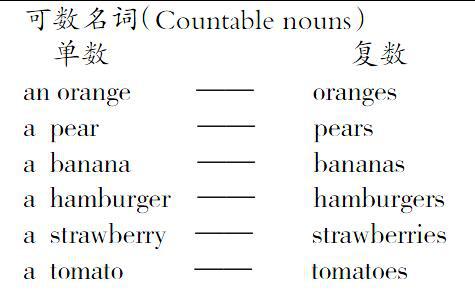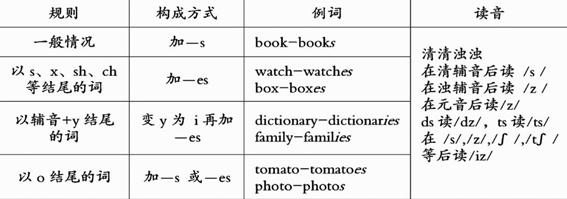Unit 6 Do you like bananas? Section A 1a—2c教学设计及评析
2018-07-25杨柳王志君
杨柳 王志君



一、教材内容分析
本单元主要围绕“谈论对食物的喜好”这一交際功能展开,并以like为例,进一步学习实义动词在一般现在时中的用法。Section A 部分主要让学生使用动词like询问他人是否喜欢某种食物,学习一般现在时第一人称和第二人称的肯定句、否定句和一般疑问句的构成以及回答。在学习一些食物名称时,让学生初步了解可数名词、不可数名词的概念,并进一步归纳、总结名词复数的构成规律和用法。1a-1c呈现了本单元核心词汇和句型A: Do you like...? B: Yes, I do./ No, I dont.并让学生尝试运用该句型与同伴就彼此的饮食喜好进行问答。2a-2c部分继续围绕“准备生日派对”这一话题,进行听说教学。听力中呈现出like第一人称的肯定句I like...和否定句 I dont like...
本节课是一节听说课。
二、教学目标
1.语言知识目标
①学习有关食物的词汇: banana, hamburger, tomato, ice-cream, salad,strawberry, pear, milk, bread.
②掌握以下知识目标:Do you like bananas? Yes I, do./No, I dont./ I like bananas./ I dont like bananas.
2.语言技能目标
①听力技巧指导,听关键词,快速记录;
②学会使用动词like询问他人是否喜欢某种食物。
3.情感态度
通过学习一些中西方典型食品,学生了解中西方饮食文化差异;通过谈论饮食喜好,学生养成良好的饮食习惯。
三、教学重、难点
教学重点:熟练掌握有关食物的词汇和询问他人喜好的句式。
教学难点:正确使用表示食物的可数名词、不可数名词和既可数又不可数名词。可数食物名词的词形变化,归纳可数名词变复数的构成规律和读音。
四、教学步骤
Step 1 Lead-in
T: I want to have a birthday party.I have many things for you.Now, look at the picture, do you know them? Do you like bananas? OK, today lets learn the new lesson Unit 6 Do you like bananas? Section A 1a-2c. (Write “Unit 6 Do you like bananas? Section A 1a-2c” on the blackboard.)
Step 2 New words
1.Present the new words.
T: Whats the picture about?
S1: Food.
T: What are they? Lets learn the new words.(Show pictures to teach the names of the food such as “banana, hamburger, tomato,ice-cream, salad, strawberry, pear, milk, bread.”)
2.Read the new words together.
3.Say the English words according to the Chinese meaning.
设计意图:教师以要开生日派对为话题,导入关于对食物喜好这一新课并通过展示图片,让学生直观地学习核心词汇,学生学习的积极性被调动起来,全面参与,共同进步。
Step 3 Grammar
1. Countable nouns
T: Look at these words(an orange, a pear, a banana, a hamburger, a strawberry, a tomato), we can find out they are “an or a” , so they are countable nouns.We can change them into plural forms.Look!
2.Rules for changing the singular forms into plural forms.
T: Now let me teach you the rules for changing the singular forms into plural forms.
名词变复数的部分规则如下:
T: Read after me, pay attention to the pronunciation of the plural forms.
3.Countable nouns and Uncountable nouns.
T: Fill in the blanks using the new words about the food.
Which words are countable nouns? Which are uncountable?
And which are countable and uncountable?
设计意图:通过学习食物名词,学生能区分这些有关食物的名词是可数名词、不可数名词,还是既可数又不可数名词,并掌握可数名词变复数的变化规律及复数名词的读音。
Step 4 New drills
1.Present the new drills.
T: (Show bananas in front of the class.) I like bananas.Do you like bananas?
S1: Yes, I do./ No, I dont.
(Write down the sentence structure on the blackboard.)
2.Practice the drills.
T: Now ask and answer, practice the sentence structure.
S1: Do you like...?
S2: Yes, I do./ No, I dont.
设计意图:通过展示香蕉实物,老师介绍喜欢的食物—香蕉,引起学生的兴趣,然后操练新句型,提醒学生like后面的名词是可数名词的复数形式或不可数名词,同时呈现食物图片与句型,逐一练习,以此突破重点句式。
Step 5 1a Match the words with letters
T: Open your books.Match the words with the letters.(First look at the new words, say out the Chinese meanings of these words.Then look at the pictures of these food in the book, say out the English words.)
设计意图:通过书上图片,学生能看图说单词,并能看单词说出食物名称,巩固新学词汇。
Step 6 1b Listening
T: I have three friends, do you want to know what they like and dislike ?Look at 1b.Listen and number the conversations.(After listening, ask students to read the conversations together.Let students pay attention to the tones of these sentences.)
設计意图:通过听力练习,巩固所学句型。通过跟读听力,提醒学生读三组对话时的音调。
Step 7 1c Practice
T: Work in pairs.Practice the conversations and make your own conversations.
Model: S1: Do you like pears?
S2: Yes, I do./ No, I dont.
设计意图:根据表情符号,准确判断出对食物的喜好,操练巩固所学句型。
Step 8 New drills
1.Present the new drills.
T: I have an orange now, do you like oranges?
S: Yes, I do.Do you like oranges?
T: No, I dont.I dont like oranges.I like strawberries.(Write down the sentence structure “I like.../ I dont like ...” on the blackboard.)
2.Practice.
T: Look at the screen, tell me your likes and dislikes.
I like...
I dont like...
设计意图:教师以橙子为例与学生进行对话,以此导出新句型I dont like.../ I like...,并提醒学生like 后面接可数名词复数形式或不可数名词,攻克教学难点。
Step 9 2a, 2b listening
T: I want to invite my friends to my birthday party, well what do they like? Listen and circle the food you hear.(Listen again.Fill in the blanks and check the answers.)
T: Role play the conversations.Boys and girls work in two groups.
设计意图:通过前面的训练,学生应该对所学的生词很敏感,听力练习要求听出关键词。在播放听力后,要求学生能迅速准确写出这些单词,此活动帮助学生巩固所学单词。男女生分角色读对话后,教授lets句式。
Step 10 Group work
T: Do you want to come to my birthday party? Now work in groups with the new drills.Let me know what you like and dislike, then Ill buy them for you.
设计意图:通过小组练习,培养学生的合作意识,鼓励他们可创造性编写对话,进一步巩固本节课所学句型和核心词汇。
Step 11 Summary
1.Vocabulary about food.
2.Likes and dislikes.
T: At last ,give you a saying “An apple a day keeps doctor away.” We should have a good eating habit to keep healthy.
Homework.
Write down what you like and dislike.
板書设计:
Unit 6 Do you like bananas? Section A 1a-2c
四、教学评析
1.创设情境,自然导入
七年级学生活泼好动,且善于接受新事物。因此,为了激发学生对英语课堂内容的兴趣,老师利用一张全是食物的大图片,引发所有学生思考“都有什么好吃的”,然后,把英语单词同实物或情景直接联系起来,增强语言的真实性、形象感,易于调动和保持学生的学习兴趣。
2.情境贯穿,词句渗入
对于英语学习初级阶段的学生来说,教师采用直观教学的方式,使其一开始就把实物与英语直接联系起来,获得一个直观印象。利用两张图片(一张图是一个苹果,另一张图是多个苹果)来呈现名词单复数变化,让抽象的语法知识点变得既客观具体又贴近学生的生活。在教授新知识的过程中,继续以“开生日派对”为活动情境,并通过表情符号表现出对食物的喜好,从而理解I like...和 I dont like... 的表达句式,通俗易懂,并能记忆深刻。
3.一听一说,巩固深入
学中有练,练中有学,新授与巩固融为一体。听力语料的主题内容承载着重点语言知识。听力前的活动能使学生感知听力课文中出现的新语言知识,如核心词汇、句型,所以在学习听力活动会产生障碍的词汇及必要的语言知识后,按整节课开生日派对这一情境设计问题,通过听力训练,听出关键词,快速记录下来,巩固所学核心词汇。
引导学生积极主动地模仿听力材料——模仿着去读、模仿着去说。通过模仿使学生进入英语学习的最佳状态并获取英语课程的基本知识。本堂课以小组表演、角色朗读形式强化巩固所学句式,pair work 展示表演锻炼了学生的胆量,激励学生敢于在大众面前开口说话,克服心理障碍,提高语言交际能力,培养学生合作探究式学习。
见习编辑/李梦迪
